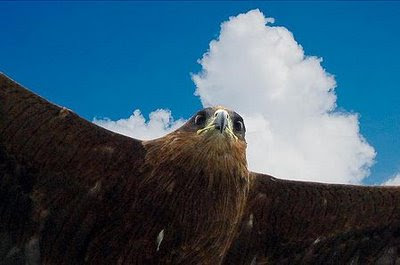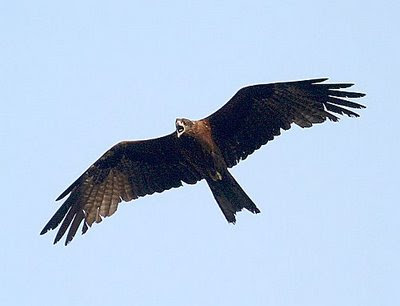The Greater Coucal is the size of a Jungle Crow, but with a long and broad tail. The bird is a large species of Cuckoo around 48 cm in size. Its head is black and its eyes are ruby red, its upper mantle and underside are black glossed with purple and its back and wings are chestnut brown.
[The poster of this video mentions that several Coucals (and some other birds) are audible on the soundtrack]
The call of this bird is an easily distinguishable deep, resonant coop-coop-coop and its deep calls are associated with spirits and omens. In fact this bird is traditionally associated with many superstitions and beliefs.

The bird is easy to view around the countryside surrounding Tiruvannamalai. They specially like open forest, scrub and bush and groves around human habitation. Several visit my garden regularly and two are in current occupation around a nest constructed in some garden trees.
Coucals enjoy most: caterpillars, insects, snails, lizards, mice and bird’s eggs. But I’ve noticed them also enjoying the nut and fruit snacks strewn under bushes on my garden floor. The Coucal is a clumsy bird which stalks along the ground and hops amongst shrubs and trees.


As well as drying off after rain, this bird enjoys sunbathing in the mornings with its wings spread out. The Greater Coucal is most active in the mornings and late afternoons. The territory of a nesting pair has been found in South India to be around 10 acres on average.
The Coucal’s nesting season is generally around February to September. Its nest is a large untidy mass of twigs and leaves with a lateral entrance.
The below photographs are of a Coucal nest in my garden. The nest definitely has a lateral entrance as its impossible to reach the nest from topside as is evidenced by the third photograph in this nest sequence in which the nest is so well buried in the trees, that its impossible to see the nest from the roof of my house.
Have already experienced a lot of fun with our resident Coucals, as several days previously one of the birds had a slip whilst getting to its nest and was forced to make a hasty and ungainly exit downwards using the branches and leaves as an emergency slide. Since that day I've noticed that the birds seem to approach their own nest much more cautiously.














































